question 12: colour of gills
In this section, we must select the colour of the gills (located under the cap), among the choices proposed. In the case of several colours, which may vary depending on the humidity level or age, select the colour of the gills of the oldest specimen (unless of course it is decaying or dried). All colours that gills can take for a given species are in any case taken into account by the system. Note that the colour of mature gills are often related to the colour of the spore print.
Examples:
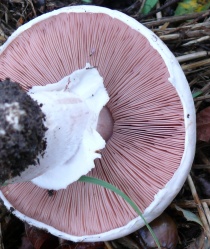
|
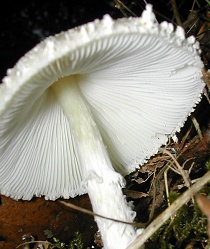
|
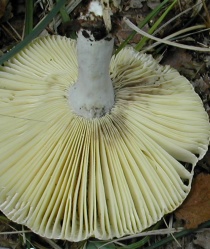
|
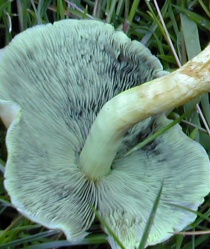
|
|||
| The gills are pink here, select then "pink, red, wine purple, blue to violet" in this case. In this example, they'll become brown when mature. | The gills are here clearly white, select then "white, cream or pale" in this case. | The gills are here more like creamy-yellow, select then "yellow, orange, ochre to brown" in this case. | The gills are here yellowish with greenish shades, select then "greenish shades" in this case. | |||
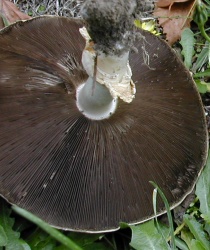
|
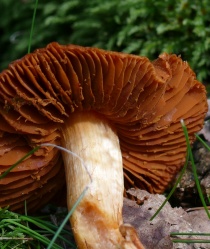
|
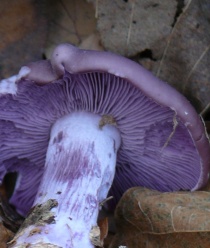
|
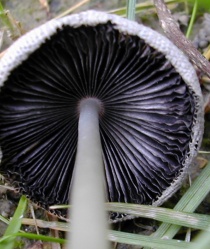
|
|||
| The gills are here obviously brown, select then "yellow, orange, ochre to brown" in this case (we could also have selected here "dark, grey to black", for the same result) | The gills are rust coloured, select then "yellow, orange, ochre to brown" in this case. | The gills are violet here, select then "pink, red, wine purple, blue to violet" in this case. | The gills are black here, select then "dark, grey to black " in this case. |

Return to identification form